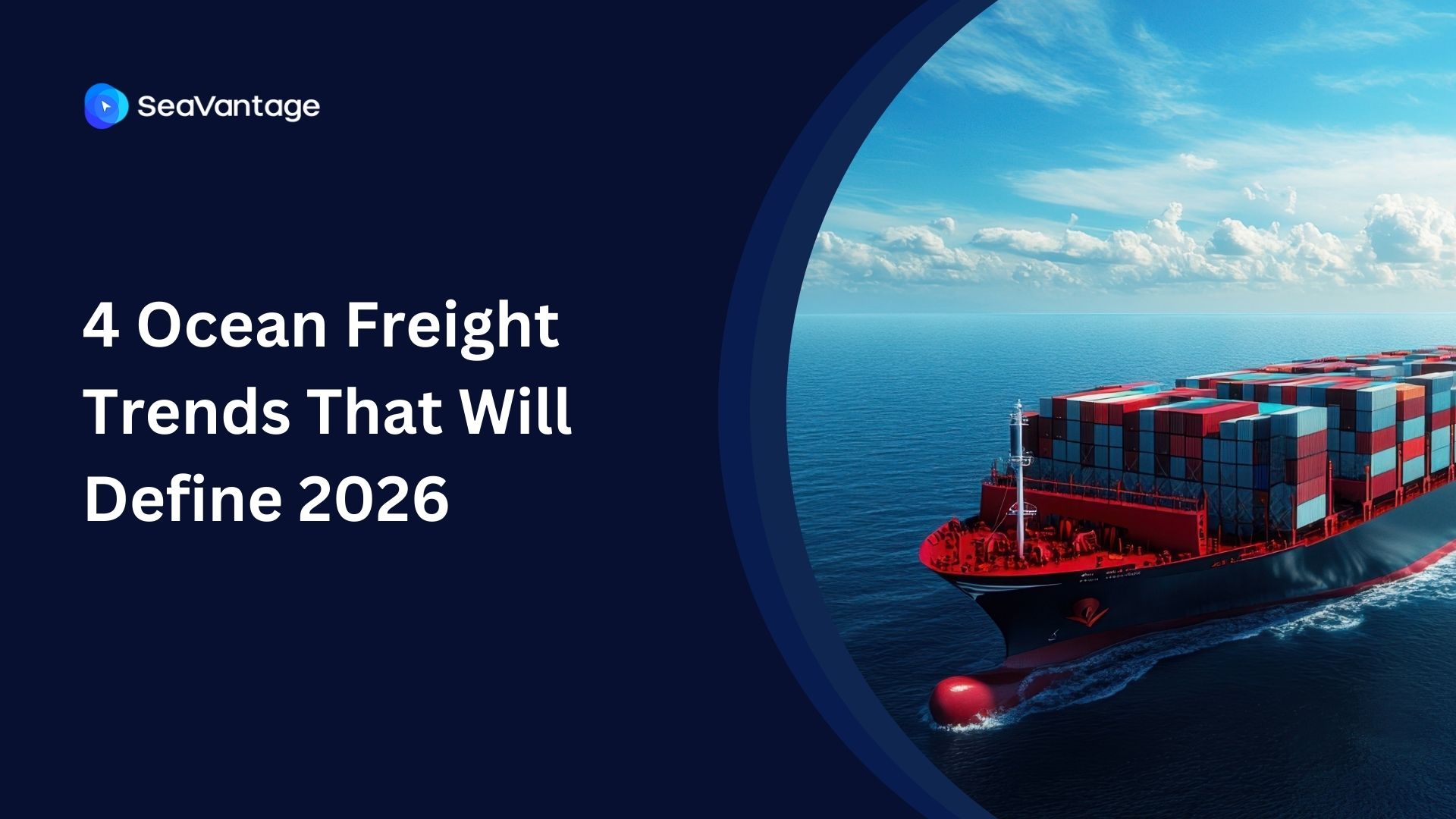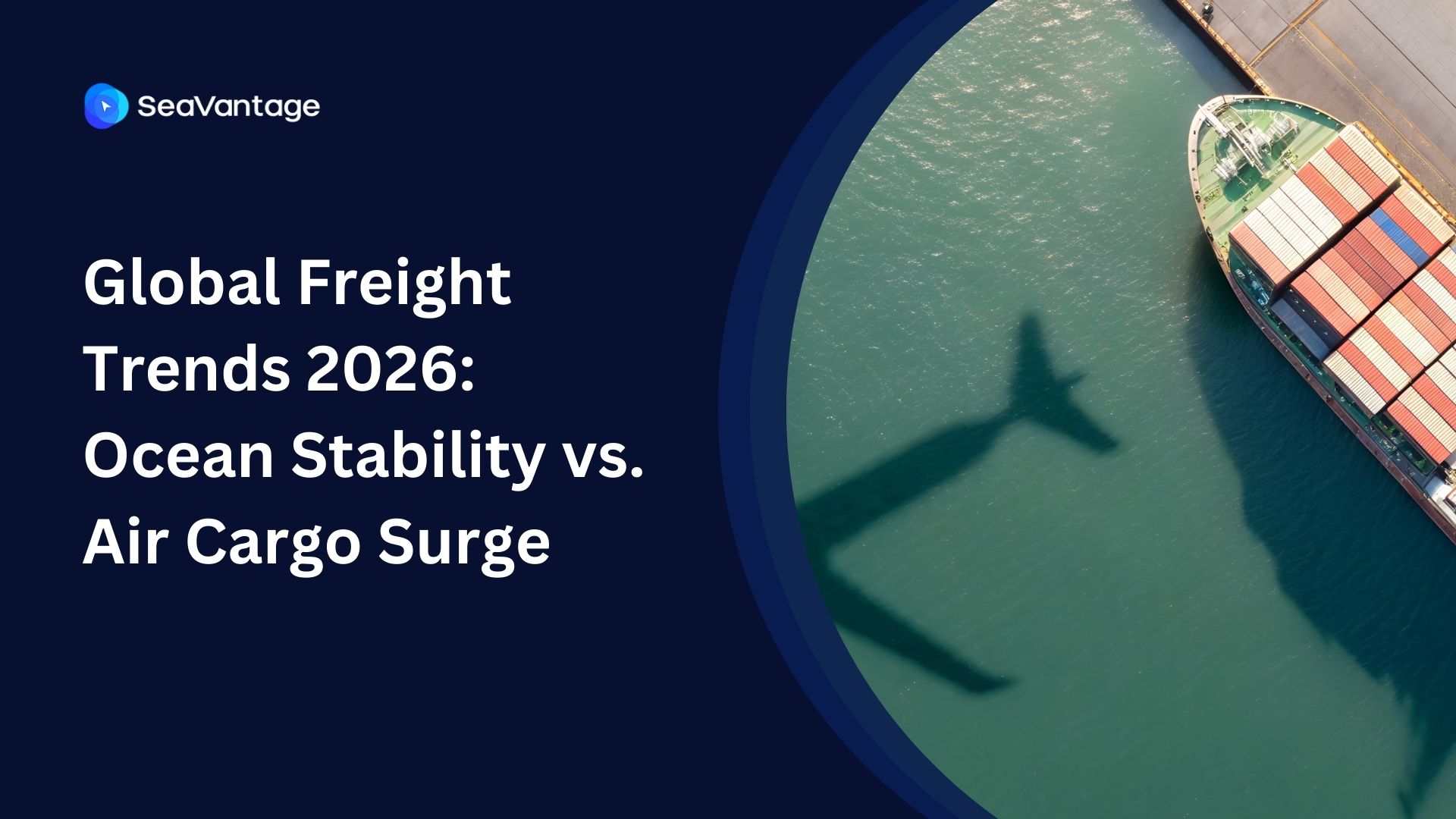Understanding the Carbon Intensity Indicator (CII) and Its Impact on Maritime Shipping
%20and%20Its%20Impact%20on%20Maritime%20Shipping%20(2).jpg)
Shipping is the backbone of global trade, moving nearly 90% of goods worldwide. But with growing concerns about climate change, the shipping industry is facing increasing pressure to cut down on its carbon emissions. A big part of this is the introduction of the Carbon Intensity Indicator (CII). In this article, we will discuss the CII, how it works, and what it means for different stakeholders in the shipping business.
What Is the Carbon Intensity Indicator (CII)?
The Carbon Intensity Indicator (CII) measures how much carbon dioxide (CO₂) a ship produces for every ton of cargo it carries over a certain distance. It is a way to track how environmentally friendly or efficient a ship is in terms of emissions.
The CII is calculated by dividing the ship's total CO₂ emissions by the distance it travels and the amount of cargo it carries. This essentially gives a number that shows how much carbon the ship produces per unit of work. The goal is for ships to become more fuel-efficient, cut down on emissions and eventually, reduce the industry's environmental impact.
The International Maritime Organization, also known as IMO, regulates global shipping. It has introduced the CII as part of its effort to reduce the shipping industry's contribution to global carbon emissions. This plays a crucial role in fighting climate change, as the shipping industry accounts for about 3% of global CO₂ emissions.
The CII Calculator: A Handy Tool for Shipping Companies
To make things easier for shipping companies, the IMO created the CII calculator. This tool helps companies track their ships' carbon emissions, check if they meet the required CII standards, and see where they can improve.
Every ship gets a rating from A (very efficient) to E (inefficient), based on how well it reduces carbon emissions. The target is for ships to reach at least a "C" rating by 2026, with stricter targets coming after that. Failure to meet the required CII standards could result to stricter regulations, fines, or limits on operations.
The CII calculator helps shipping companies see how well their ships are performing and what needs to improve, making it an essential tool for staying on track with IMO rules and ensuring that vessels meet the required standards set by the IMO.
How CII Affects Various Stakeholders Within the Shipping Industry
The introduction of the CII has an impact on various stakeholders in the shipping industry. From shipowners to regulators to customers, each stakeholder has a significant role to play in reducing carbon emissions. Here's how the CII affects each stakeholder:
1. Shipowners and Operators
The CII can be considered either as a challenge or an opportunity for shipowners and operators. They'll need to find ways to cut emissions, whether that's through cleaner fuels, better fuel management, or more efficient ship designs. However, improving CII performance can also help lower long-term operating costs and improve competitiveness.
- Fuel Efficiency: One of the biggest ways to reduce carbon intensity is by using less fuel. Ships may switch to cleaner alternatives like LNG, biofuels, or even hydrogen. They might also adopt new technologies that help save fuel, such as hull modifications or air lubrication systems.
- Ongoing Monitoring: Achieving a good CII rating requires regular monitoring of fuel usage and emissions. This means that shipowners will need to collect data and adjust their operations as needed to stay within the required limits.
- Attracting Eco-Conscious Customers: As sustainability becomes a bigger concern for businesses and consumers alike, shipping companies with lower carbon intensity ratings will stand out. This to a competitive edge, which can attract clients who are also looking to reduce their own carbon footprint.
2. Regulators
From the perspective of regulators, the CII pushes the whole industry to work toward environmental sustainability. The IMO is responsible for monitoring ships' compliance with CII standards, ensuring that they meet the required emissions levels. If ships fail to meet these standards, regulators can issue penalties or require corrective actions.
But it's not all about penalties. Regulators are also working to create incentives for shipping companies that adopt cleaner technologies early on. This can help drive the industry's transition to greener practices.
3. Shippers and Supply Chain Managers
Shippers and supply chain managers also feel the effects of the CII. As shipping companies work to reduce emissions, some of the costs of adopting new technologies or using cleaner fuels may be passed on to customers. But over time, these changes could lead to more efficient operations, which can actually lower costs in the long run.
Shippers must also track their carbon emissions from shipping as part of their overall sustainability goals. By working with their shipping partners, they can ensure that they're meeting their carbon reduction targets and providing greener logistics options.
4. The Public and Environmental Advocates
Consumers and environmental organizations will see the CII's positive impact through reduced carbon emissions in the shipping industry. As more ships improve their carbon intensity, the overall environmental footprint of global trade will shrink, which is a win for the planet.
Additionally, as awareness around sustainability grows, consumers may prefer to support companies that are committed to reducing their environmental impact. This shift in consumer behavior will likely encourage the shipping industry to keep pushing for greener solutions.
Best Practices for Reducing Carbon Intensity in Shipping
What are some strategies shipping companies can implement to lower their carbon intensity and achieve the IMO's targets? Here are some best practices to consider:
- Improve Fuel Efficiency: One of the most effective and known ways to reduce carbon emissions is using less fuel. Ships can switch to cleaner fuels like LNG or biofuels, or they can simply optimize their fuel consumption through better engine management and route planning.
- Adopt Energy-Saving Technologies: Technologies like wind-assist propulsion or hull modifications can help ships save fuel and lower emissions. Ships can also use real-time tracking systems to monitor fuel usage and make adjustments when needed.
- Make Operational Adjustments: Simple changes, such as reducing speed (slow steaming), optimizing travel routes, and reducing time spent idling in port, can all contribute to lower carbon intensity.
- Carbon Offsetting: By investing in environmental-focused projects concerning renewable energy or reforestation, shipping companies can offset their carbon emissions.
Conclusion
The Carbon Intensity Indicator (CII) is a key measure in driving sustainability within the shipping industry. By focusing on improving fuel efficiency, adopting cleaner technologies, and making smarter operational choices, shipping companies can reduce their emissions and help fight climate change.
At SeaVantage, our clients can view relevant ship information, including but not limited to the CII rating and optimal routes, which take into consideration the carbon emissions of the vessel. This is part of our ongoing commitment to support environmental sustainability efforts and continuously tailor our services to the up-to-date needs of our clients.
The CII is not just about compliance—it is about setting a standard for sustainability, cutting costs, and contributing to a brighter future for the shipping industry and the planet.
2025년 9월, 주요 글로벌 항만에서 어떤 운송사가 가장 긴 선박 체류 시간을 기록했는지 확인해보세요. 트렌드를 비교하고, 지연을 파악하며, 전체 항만 데이터를 통해 운송 전략을 최적화할 수 있습니다.
2025년 8월, 주요 글로벌 항만에서 어떤 운송사가 가장 긴 선박 체류 시간을 기록했는지 확인해보세요. 트렌드를 비교하고, 지연을 파악하며, 전체 항만 데이터를 통해 운송 전략을 최적화할 수 있습니다.
2025년 7월, 주요 글로벌 항만에서 어떤 운송사가 가장 긴 선박 체류 시간을 기록했는지 확인해보세요. 트렌드를 비교하고, 지연을 파악하며, 전체 항만 데이터를 통해 운송 전략을 최적화할 수 있습니다.
iscover the 4 critical ocean freight trends for 2026, from the Red Sea reopening and fleet overcapacity to shifting global trade maps. Prepare your supply chain now.
Discover key 2026 freight market trends: Port of Houston expansion, air cargo "super peak," and ocean freight stability. Plan your supply chain with SeaVantage.
Explore November 2025 global port dwell time data. See which ports and carriers led in efficiency across Antwerp, Busan, Long Beach, Rotterdam, and Singapore.



.svg)





.jpg)

.png)